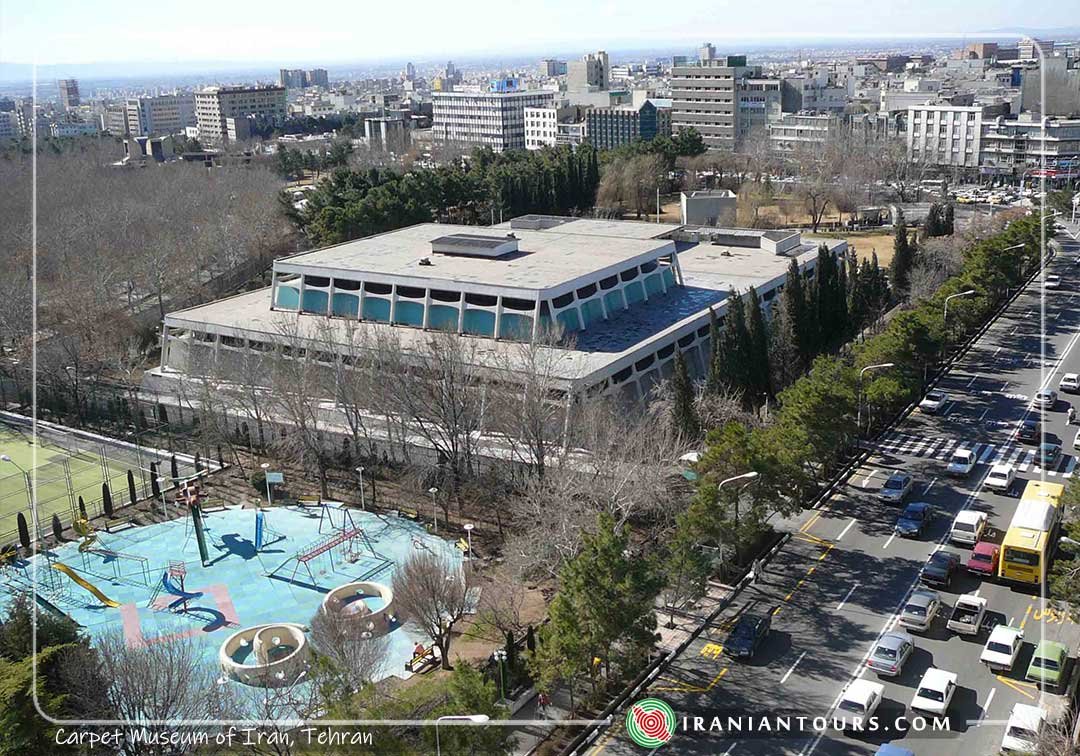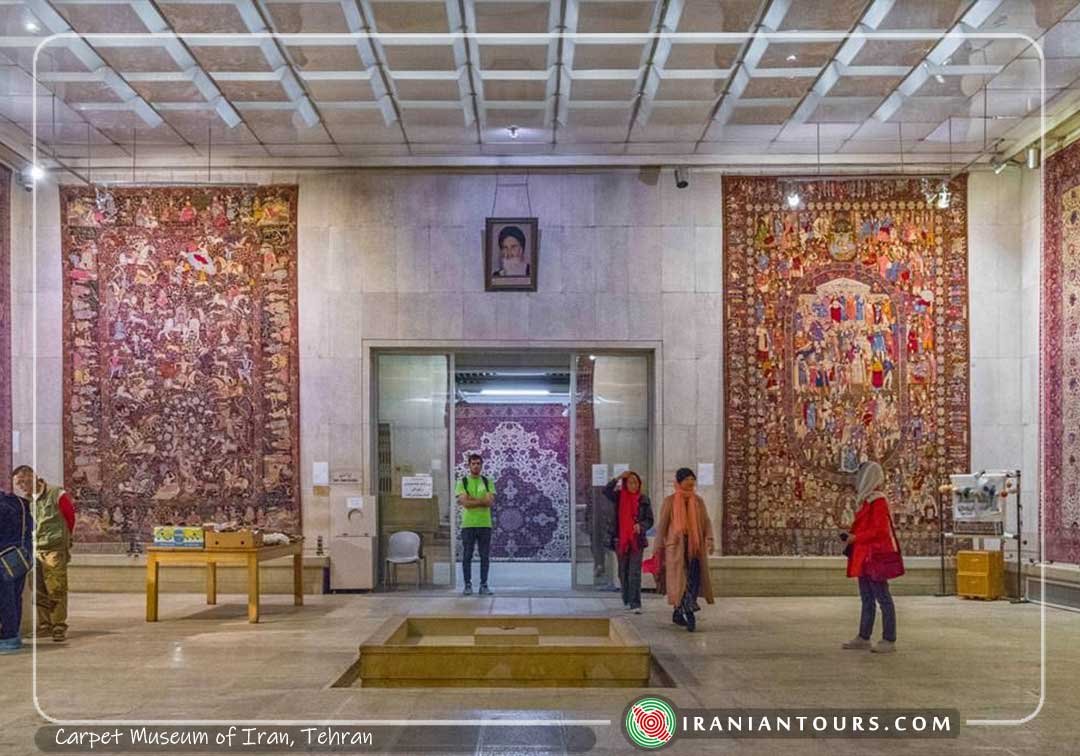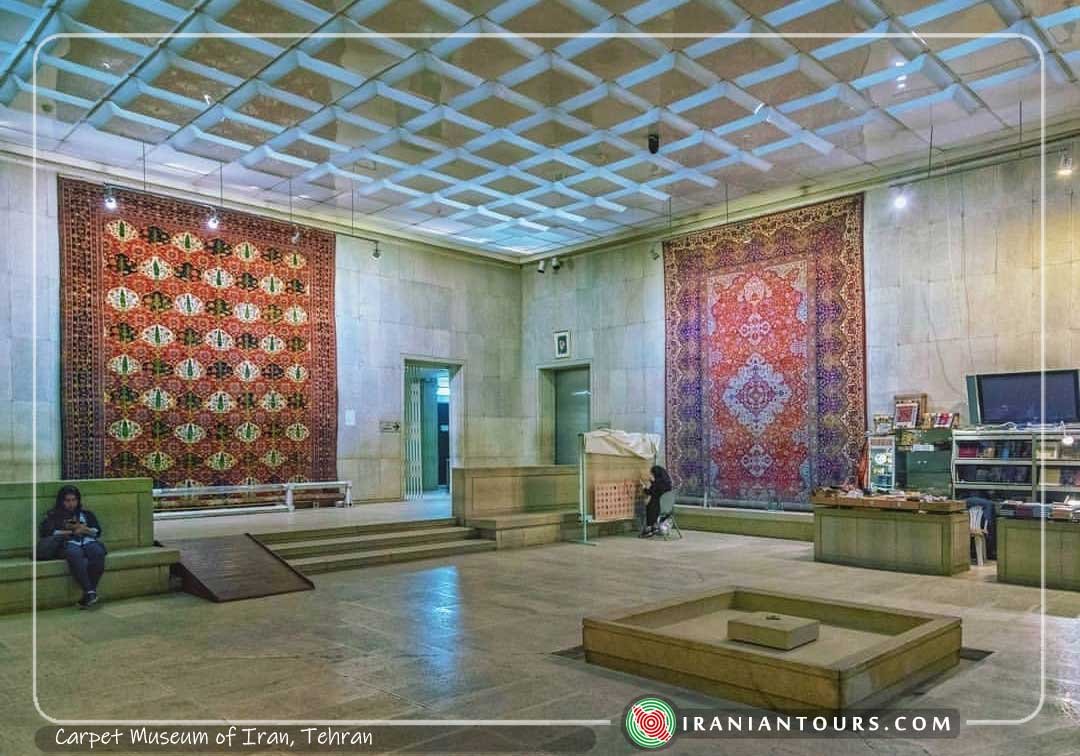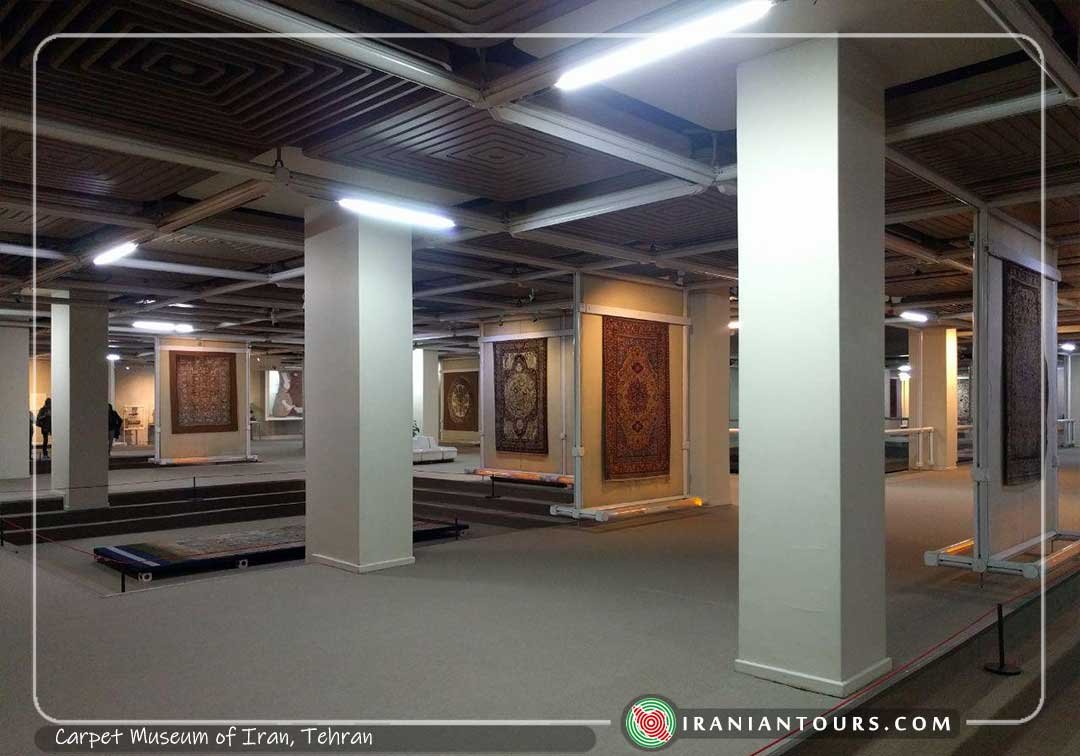Carpet Museum Of Iran
The Carpet Museum was founded by Farah Pahlavi in 1978, one year before the Islamic Revolution of Iran. Designed by the great Iranian architect, Abd-al-Aziz Farmanfarmaian, the building of the museum deserves due appreciation in its own right. The exterior design of the building is inspired by the form of carpet weaving looms and simple nomadic elements. This attractive design also shelters the building from sunlight, helping to adjust the temperature inside. The intelligent architecture of the exhibition’s spaces has been aimed at minimizing the destructive effects of light, dust, humidity, and heat.
The museum houses a stunning collection of Iranian carpets dating from the 16th century to the present. The intermingled patterns of the exhibits have created a magnificent contrast to the simple architecture of the building.
The Persian carpet is an inseparable part of Persian culture. During its several-thousand-year-old history, it has decorated the Iranian residences, from the nomad tents to the opulent royal palaces. Warming and enlivening Iranian houses, Iranian carpets hide the tears and smiles of those living on them and are left to the succeeding generations.
This selection of carpets, rugs, and kilims are collected from national and international sources and mostly from the Golestan Palace. After the Islamic revolution, several carpets were brought here from Saadabad palace and other governmental organizations. Included among the items are the figurative hand-woven carpets depicting dignitaries and notable people, religious figures or events, and also scenes from Ferdowsi’s Shahnameh and Nezami’s Khamseh. A remarkable example of these is the Qajarid carpet depicting 54 world-renowned figures encompassing prophets, politicians, and philosophers. The other one pictures 25 different scenes from Shahnameh in 25 frames, again dating from the Qajar era.
It is quite easy to get lost in the various patterns and colors flaunting different regional styles of Iranian carpet weaving. Sitting on the benches, looking attentively at the play of weft and warp, and you will find an insight into the Persian art, culture, and history sketched out with wool, silk, and cotton. To fully understand this delicate art, you can use the slides displayed in the showroom where you can see natural dyes as well.
Continue with the well-curated exhibition room with carpets hanging on its walls like windows opening to lavish gardens. If you take the stairs to the second floor you will see the temporary and seasonal exhibitions.
The other parts in the museum are the Conservation Workshop, specialized in repairing damaged carpets, the Storage Room, where rare carpets are preserved in steel cylinders, and the library of the museums, holding about 7000 books about the Persian and eastern carpet, literature, culture, and history in English, German, French and other languages.





